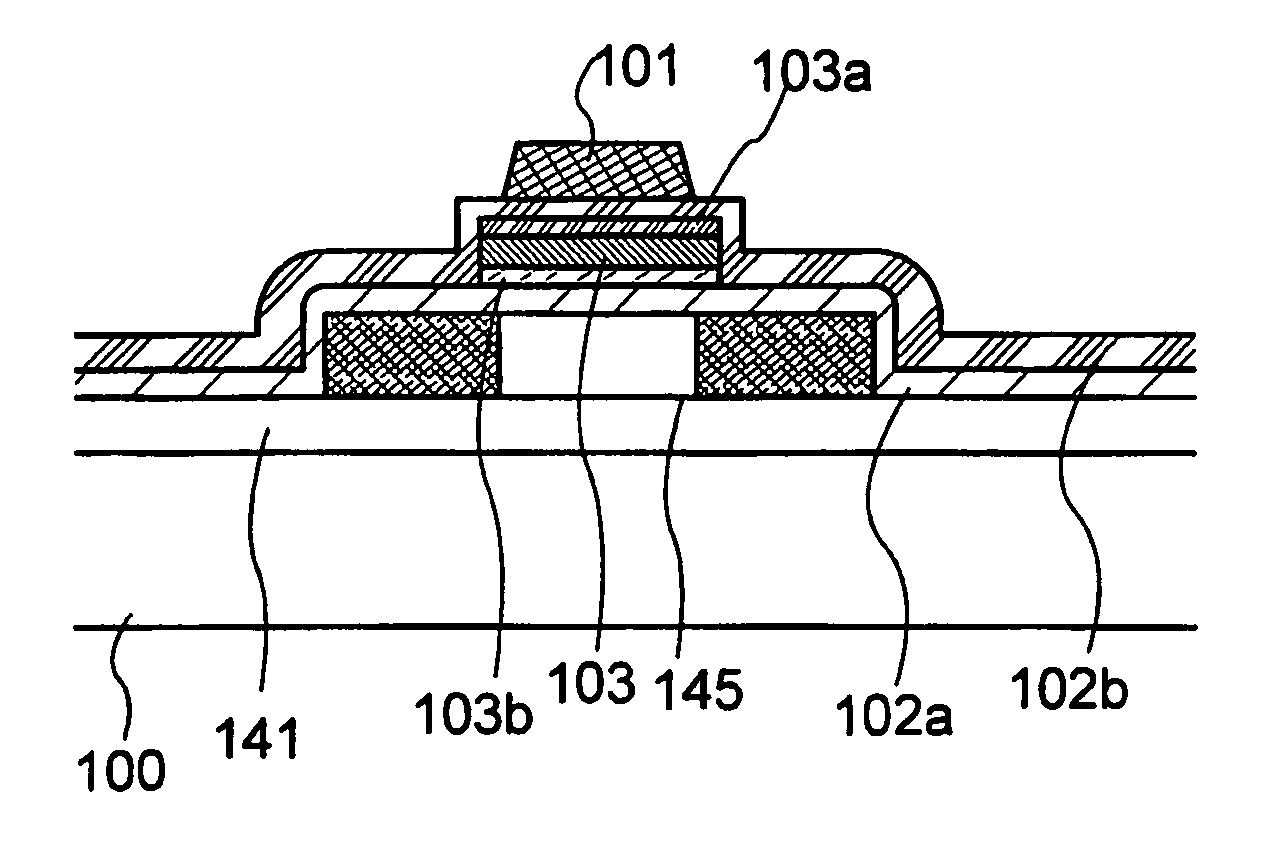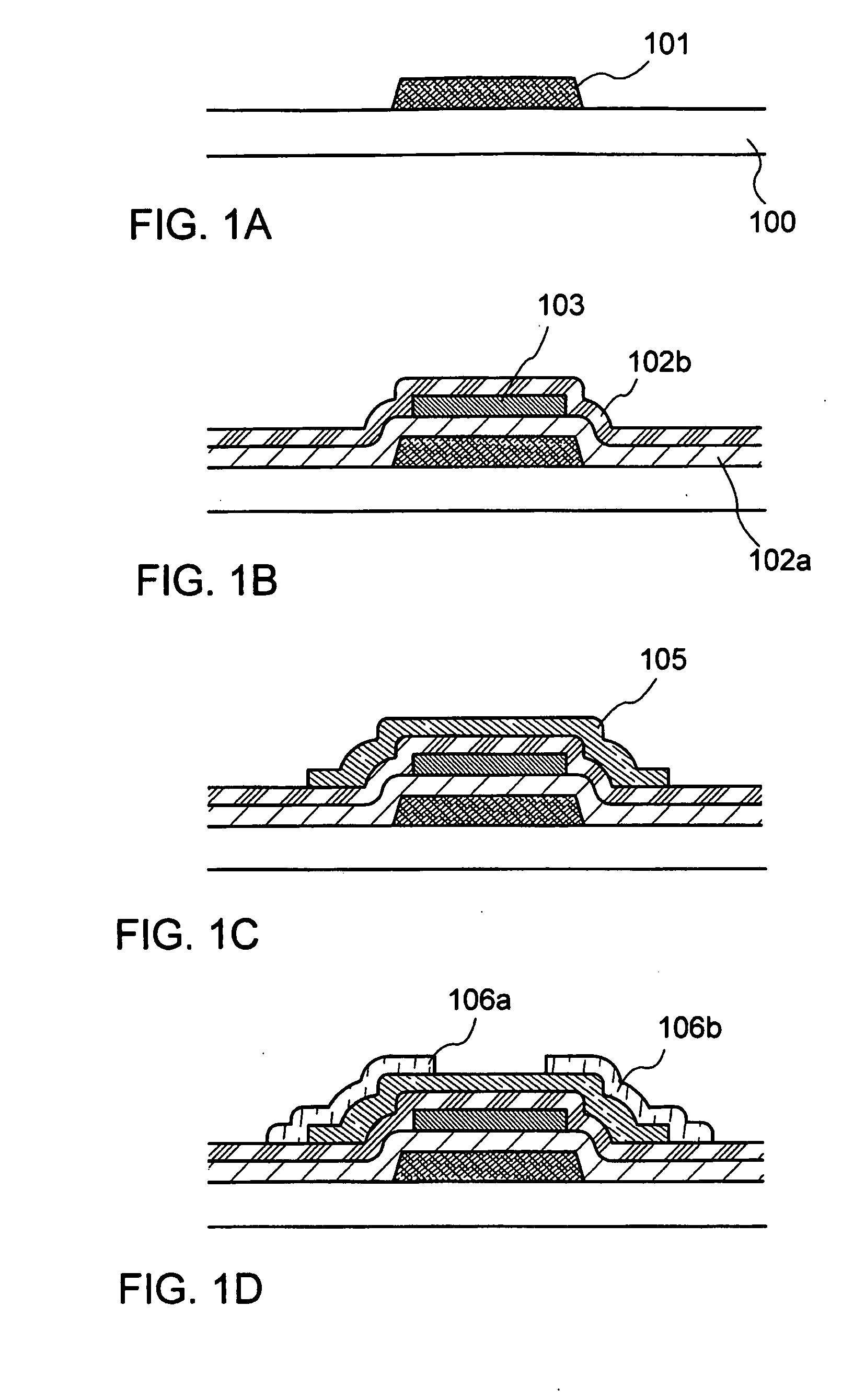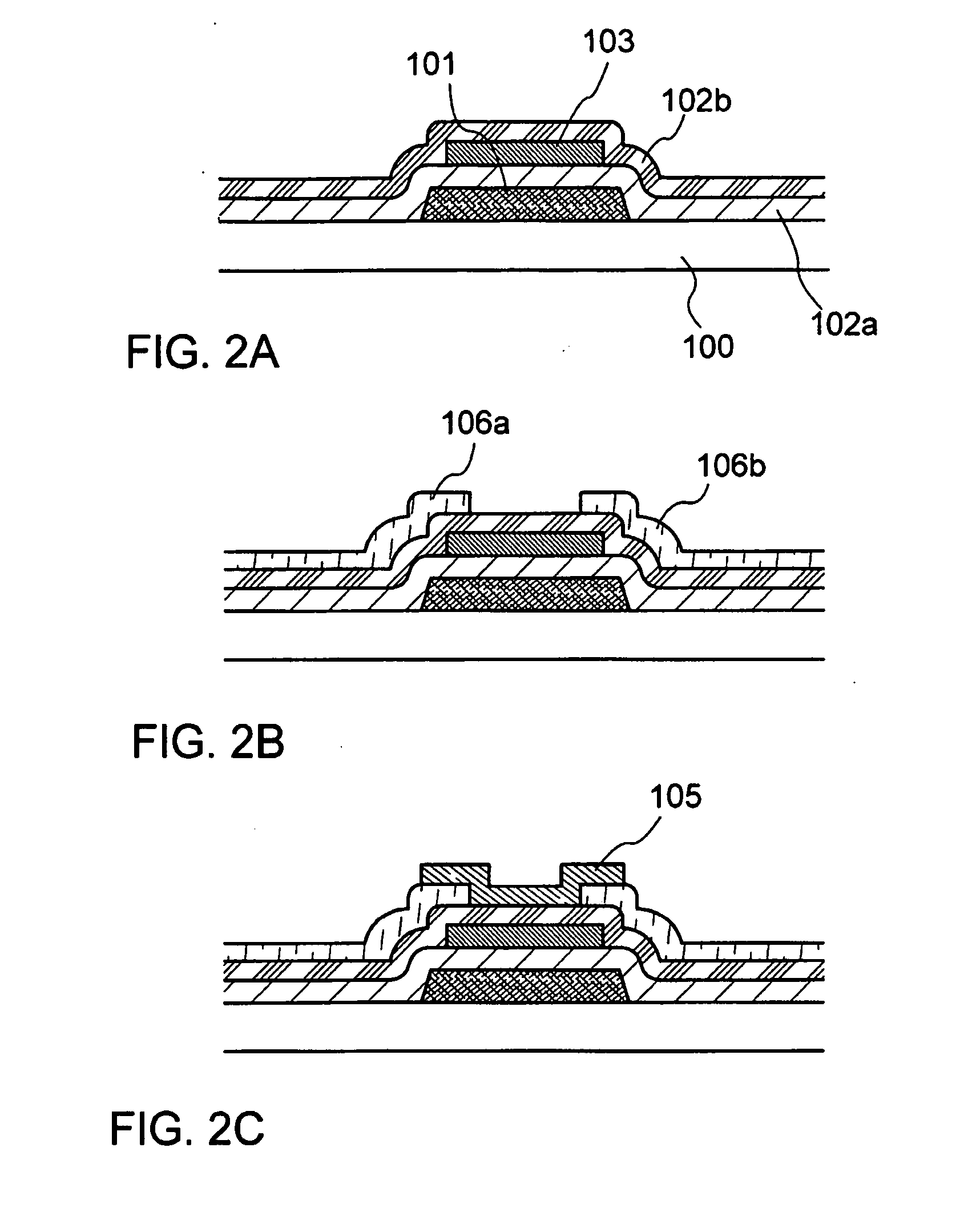Semiconductor Device and Manufacturing Method Thereof
a technology of semiconductor devices and manufacturing methods, applied in the direction of semiconductor devices, thermoelectric device junction materials, electrical apparatus, etc., can solve problems such as deterioration of insulating films, and achieve the effects of easy charge separation, reduced applied voltage, and easy charge separation
- Summary
- Abstract
- Description
- Claims
- Application Information
AI Technical Summary
Benefits of technology
Problems solved by technology
Method used
Image
Examples
embodiment mode 1
[0030] In this embodiment mode, explained is a method for manufacturing an organic semiconductor device, specifically an organic thin film transistor, having a layer in which an inorganic compound having a charge-transfer complex is mixed with an organic compound.
[0031] As shown in FIG. 1A, a substrate 100 having an insulating surface is prepared. For example, a glass substrate of barium borosilicate glass, alumino borosilicate glass, or the like, a quartz substrate, a stainless-steel (SUS) substrate, or the like can be used as the substrate 100. In addition, a substrate formed of a flexible synthetic resin such as plastic typified by PET (polyethylene terephthalate), PEN (polyethylerenaphthalate), or PES (polyethersulfone) or acrylic can be used since high-temperature treatment is not required in a manufacturing process of the organic semiconductor device of the invention.
[0032] A base film may be formed over the substrate 100. The base film is formed to prevent alkali metal or a...
embodiment mode 2
[0065] In this embodiment mode, explained is a structure of a so-called bottom contact type organic semiconductor device, which is different from the above embodiment mode.
[0066] As shown in FIG. 2A, a gate electrode 101 and a first insulating layer 102a which functions as a gate insulating film are formed over a substrate 100 similarly as in FIGS. 1A and 1B. A material, a manufacturing method, or the like of the substrate, the gate electrode, or the first insulating layer can be selected similarly as in the above embodiment mode.
[0067] Subsequently, a layer 103 in which an inorganic compound having a charge-transfer complex is mixed with an organic compound is formed. In this embodiment mode, the layer103 in which an inorganic compound having a charge-transfer complex is mixed with an organic compound is employed as a floating gate. Therefore, the layer 103 in which an inorganic compound having a charge-transfer complex is mixed with an organic compound is patterned so that a por...
embodiment mode 3
[0076] A structure of the invention, in which a layer where charge separation occurs is formed between insulating films and employed as a floating gate, can be employed in a semiconductor device including, as a semiconductor film, a film containing silicon that is an inorganic material. Thus, in this embodiment mode, explained is a semiconductor device, specifically a thin film transistor, in which a semiconductor film contains silicon, and which is different from the above embodiment mode.
[0077] As shown in FIG. 4, a silicon-containing semiconductor film 145 is formed over a substrate 100 with a base film 141 therebetween. As for the base film 141, an insulating film of silicon oxide, silicon nitride, silicon nitride oxide, or the like can be used as described in the above embodiment mode. In a semiconductor device described in this embodiment mode, the semiconductor film 145 is formed near the substrate 100. Thus, the base film 141 is preferably provided actively.
[0078] Subseque...
PUM
 Login to View More
Login to View More Abstract
Description
Claims
Application Information
 Login to View More
Login to View More - R&D
- Intellectual Property
- Life Sciences
- Materials
- Tech Scout
- Unparalleled Data Quality
- Higher Quality Content
- 60% Fewer Hallucinations
Browse by: Latest US Patents, China's latest patents, Technical Efficacy Thesaurus, Application Domain, Technology Topic, Popular Technical Reports.
© 2025 PatSnap. All rights reserved.Legal|Privacy policy|Modern Slavery Act Transparency Statement|Sitemap|About US| Contact US: help@patsnap.com



